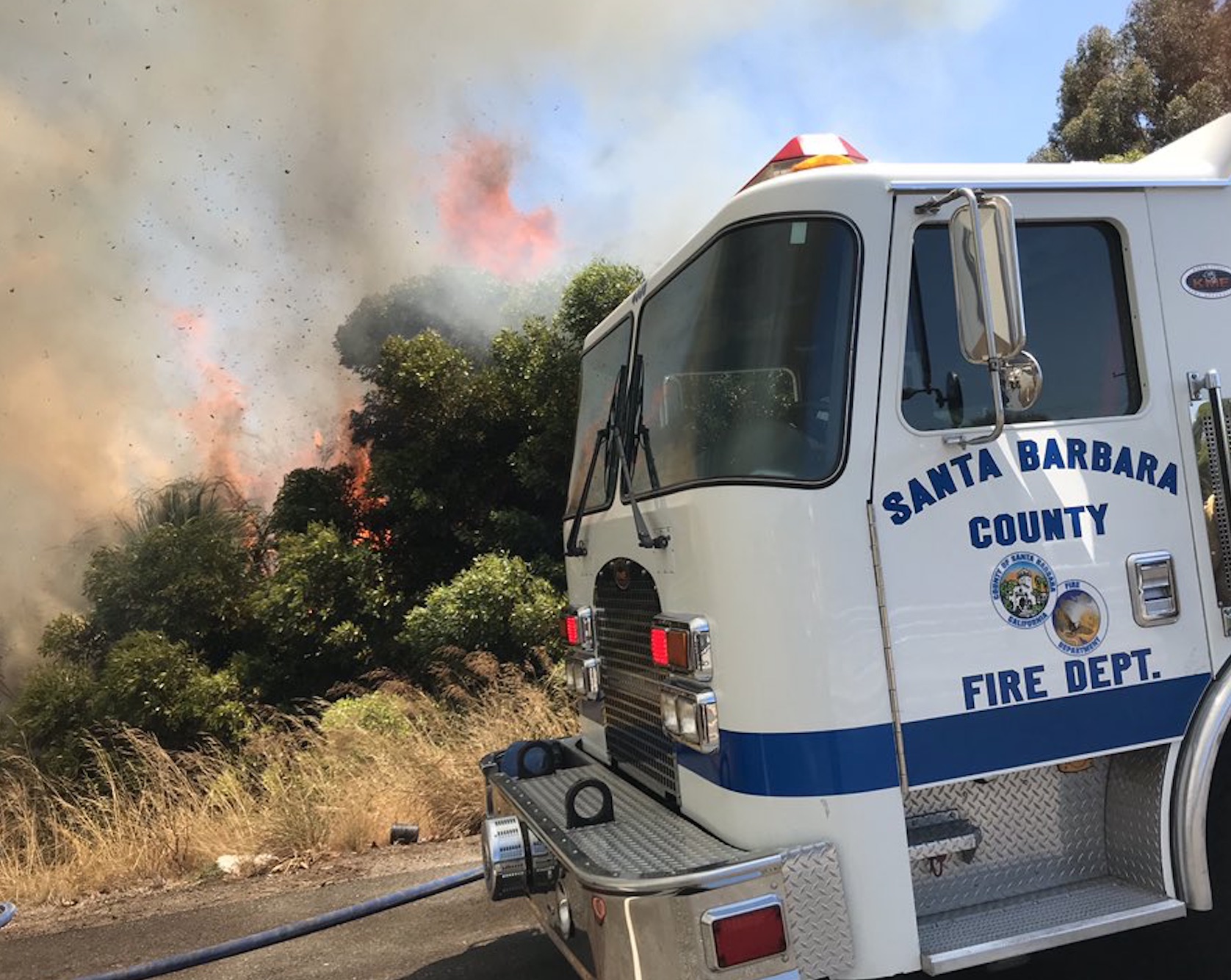Homeless Camps and Fires a Challenge for Goleta During COVID
Project Roomkey Results in Surprising Benefits for Santa Barbara County's Homeless

Two fires started in the past two weeks near homeless camps in Goleta along the southbound side of Highway 101 where the trees and bushes are heavy. “Prior to COVID-19, the City has been active and successful with clearing debris from homeless encampments and has collaborated with allied agencies to conduct cleanup efforts along the Highway 101 Railway corridor,” Mayor Paula Perotte said in a press release addressing the fires. The City of Goleta further stated that because of coronavirus, homeless camps were being left alone in the absence of a better place for the people to live and to avoid any potential disease spread. The cause of the fires, however, is still under investigation, County Fire’s Captain Daniel Bertucelli said.
The influx of money coming from the feds and the State of California to deal with COVID has included funds for Project Roomkey, which succeeded in finding motel rooms for more than 14,000 homeless Californians, including 111 rooms in Santa Barbara County. That’s far fewer than what’s needed for the more than 151,000 homeless people living in California, especially in light of the Centers for Disease Control’s recommendation that each be housed during the pandemic to help them easily access clean water and stay healthy.
What has astonished county officials, however, is that 11 people have also found real homes and another 25 are well on their way. “We are amazed at how many people have been able to move into permanent housing because we’re able to contact them,” said Lucille Boss, who is a senior specialist in Santa Barbara County’s housing program. It came about in part because the Gardens on Hope — a Housing Authority project for seniors with limited income — opened in April and also because “we had some good luck with some private landlords,” Boss said.
Get the top stories in your inbox by signing up for our daily newsletter, Indy Today.
The other part of what Boss calls luck but sounds like dedicated effort were the constant contacts between their clients and Public Health, Behavorial Wellness, and social services because the homeless people were suddenly remaining in one place. “We were able to find them instead of figuring out where they might be. We could phone them,” because they could charge their cell phones in their motel rooms, she said. This enabled Boss and other supportive services workers to help their clients check their eligibility for housing funding through disability, social security, veterans, and programs with obscure acronyms that roll fluidly throughout Boss’s conversation.
“One person moved [into a motel], but he had missed a piece of mail and lost his benefits,” Boss described. “We were able to reestablish those for him, and it gave him enough income to move into housing.” The “surprise blessings,” according to Boss, happened to several people.
The 111 motel rooms are insufficient for the county’s homeless population, estimated to be close to 1,900 individuals. Project Roomkey focuses first on people over the age of 65 who have underlying health conditions that make them vulnerable to COVID-19. The next tiers are people over the age of 65 and then people with underlying conditions.
For a bit, they were able to begin to address Tiers 2 and 3, said Boss, because so many people moved into permanent homes, but they are only able to house Tier 1 individuals in motel rooms currently.
As for Goleta, seven of the city’s 53 homeless residents have been helped into permanent housing or motels — 113 others were living in their vehicles during January’s Point-in-Time Count. The city is working to find short-term and long-term solutions, including the city’s Homelessness Strategic Plan, which visits the homelessness issues committee on July 22. In the meantime, a plan is in the forming stages with Union Pacific, which controls the area along the highway, to thin out the vegetation fuel beds and to stay in contact with the camp dwellers to prevent fires.
Every day, the staff of the Santa Barbara Independent works hard to sort out truth from rumor and keep you informed of what’s happening across the entire Santa Barbara community. Now there’s a way to directly enable these efforts. Support the Independent by making a direct contribution or with a subscription to Indy+.



